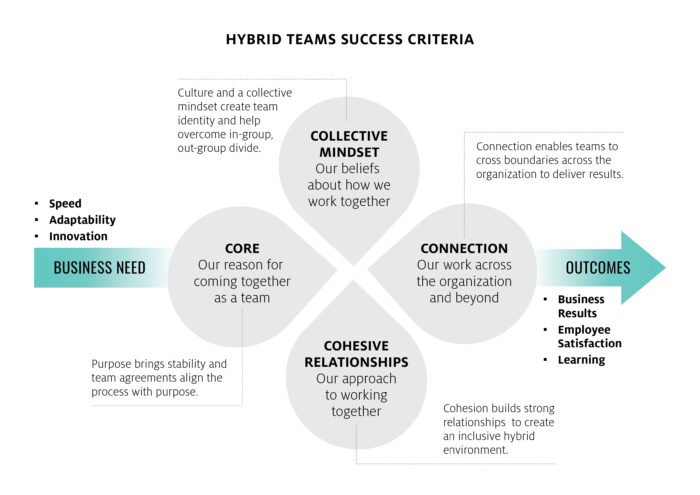Taking the next step: Leading in a hybrid workplace

Workplaces have changed, and so must leaders. While hybrid work has become the norm, leaders are still trying to decode the best way to lead their teams and organisation in the new world of work. Our recent report on WORK 3.0: Reimagining Leadership in a Hybrid World reveals that the adoption of the hybrid work model has nearly doubled in APAC, increasing from 40.8% pre-pandemic to 80.4% post-pandemic. From working exclusively in physical offices (Work 1.0) to working virtually during the pandemic (Work 2.0), organisations are now transitioning to Work 3.0 where they are trying to strike the ‘right’ hybrid balancing act.
We found that over half of the organisations in APAC either do not have a vision of what the hybrid work model in their context may look like or are still grappling with it. To be successful in Work 3.0, leaders must steer clear of myths about the hybrid work model and focus on key priorities. People and culture emerged as the top two success factors in the hybrid world, four times more so that technology.

“While hybrid work has become the norm, leaders are still trying to decode the best way to lead their teams and organisation in the new world of work.” – Elisa Mallis, VP and Managing Director, APAC, Centre for Creative Leadership.
So how can leaders ensure hybrid team success?
- Re-establish the core purpose
Employees who feel a deep sense of purpose each day are naturally more motivated and engaged at work. For example, during the orientation programme at TCS, a global IT company headquartered in India, new employees are paired with a non-profit as their first client, allowing them to see that their contributions go beyond a paycheck, to fulfilling a “bigger” objective. Taking time to ensure the core organisational purpose is connected to individual team members’ personal purpose makes a big difference.
- Develop a collective mindset with the team
Create a new Work 3.0 environment that works best for the team. Clearly most workers in Singapore prefer to continue some type of flexible work arrangements, reinforced in a recent study by the Institute of Policy Studies (IPS). Leaders must recognise this and make the necessary changes to create a new Work 3.0 environment that can keep team members engaged and motivated. For some people, hybrid is creating a lot of anxiety and complexity in terms of when they should be in the office and when they should work from home. Having to toggle between two workplaces and carve out two different sets of daily work habits can chip away at cognitive resources, creating emotional and mental fatigue. Leaders and managers need to help teams find the right rhythm that decreases these potential drawbacks and maximises more of the opportunities that can come from the hybrid set-up.

- Rebuild cohesive relationships within teams
One of the greatest trade-offs from the rise in virtual work was the inability to talk to colleagues informally at the office. Our research clearly shows that social wellbeing is negatively impacted when the opportunities to interact with work colleagues are significantly reduced. As a result, employees slip into task mode rather than focusing on relationship building – a key aspect in teamwork and collaboration. Setting weekly “collaboration days” to bring team members together in the office on consistent days each week for team meetings, open discussions and impromptu one-to-one interactions is proving to be one of the most effective approaches to rebuild team cohesion.
- Rejuvenate the connections between teams
Leaders naturally paid more attention to their internal teams and during the course of the pandemic many organisational networks weakened with the lack of inter-team and inter-departmental interaction. Increasing cross-team activities like off-site retreats and activity days, as well as enhancing digital collaboration tools, have been a few of the winning approaches for cross-team connection.
The future of Work 3.0
There is no looking back and no one single recipe of success in the Work 3.0 world. During Work 2.0, the pendulum swung all the way to maximum flexibility and virtual work and now in this first phase of Work 3.0 in many cases we are seeing the pendulum rapidly swinging back. Organisations and leaders that re-imagine and re-define their recipe for hybrid team success and where the pendulum needs to center for them will be better equipped for longer term success in Work 3.0.
About the Author: Elisa Mallis is VP and Managing Director, APAC, Centre for Creative Leadership. Join her at HR Tech Festival Asia 2023 on May 10 at 10.10am (SGT), where she will be discussing the evolving role of CHROs in the Asia-Pacific region and what lies ahead for HR leaders.



